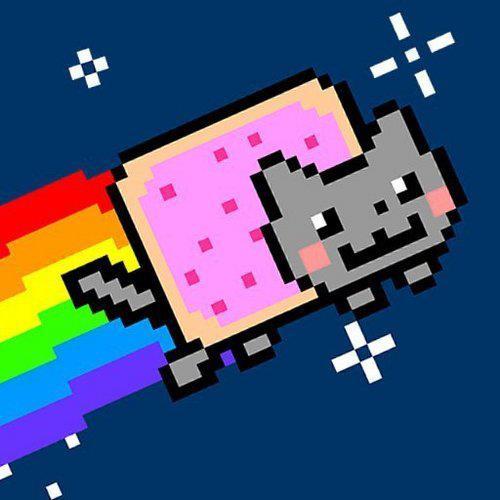Now that we have properly mapped UV properties for all of the cart components it was time to create some neat textures for the carts. In lack of other ideas, I chose to decorate our carts with one of the most popular (and oldest) Internet memes: Nyan Cat.
 |
| Nyan Cat! |
When the UV mappings are finalized within Maya you can choose to export the mappings to a PSD map, which makes it possible to create textures with proper dimensions utilizing Photoshop.
In order to create a seamless texture, it is important to fit the texture images into the UV maps by using some of Photoshop's available manipulator tools, such as
perspective and
skew.
Down below are some of the most prominent textures created:
 |
| Textures for the back carts |
 |
| Textures for the front cart |
And some textures for the smaller components of the carts can be found below:
 |
| Textures for the front cart magnets |
 |
| Textures for the cart wheels, created by using a seamless plastic-like material |
And here is what it looks like when all the external textures are applied in Unity:
 |
| External textures of the cart |



















